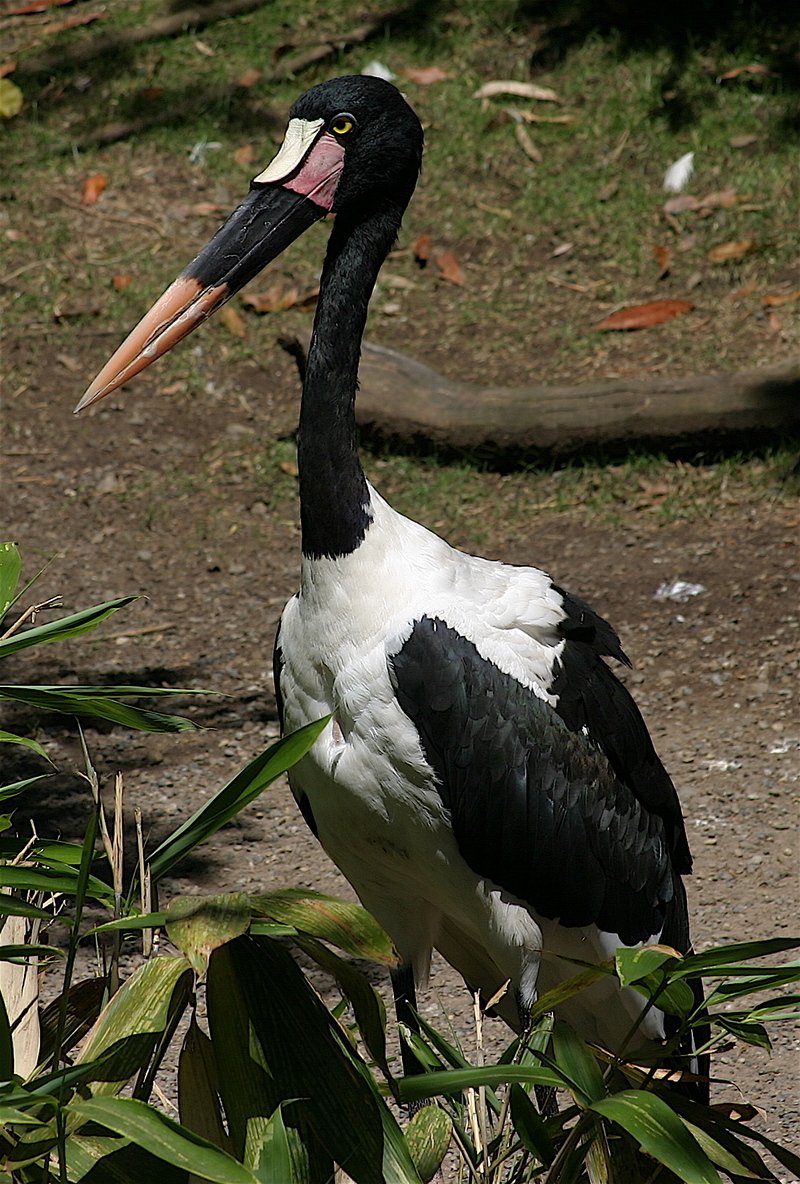ERROR : Server Busy(-1105)
ERROR : Server Busy(-1105)
Saddle-billed Stork (Ephippiorhynchus senegalensis) - Wiki
Saddle-billed Stork
From Wikipedia, the free encyclopedia
[Photo] Adult Saddle-billed Stork (Ephippiorhynchus senegalensis) at the Oregon Zoo. Date 6 August 2006. Author http://commons.wikimedia.org/wiki/User:Cacophony | Permission is granted to copy, distribute and/or modify this document under the terms of the GNU Free Documentation License, Version 1.2 or any later version published by the Free Software Foundation; with no Invariant Sections, no Front-Cover Texts, and no Back-Cover Texts. A copy of the license is included in the section entitled "GNU Free Documentation License". |
The Saddle-billed Stork (Ephippiorhynchus senegalensis) is a large wading bird in the stork family, Ciconiidae. It is a widespread species which is a resident breeder in sub-Saharan Africa from Sudan, Ethiopia and Kenya south to South Africa, and in The Gambia, Senegal, C??te d'Ivoire and Chad in west Africa.
This is a close relative of the widespread Asian Black-necked Stork, the only other member of the genus Ephippiorhynchus.
The Saddle-billed Stork breeds in marshes and other wetlands in tropical lowland. It builds a large, deep stick nest in a tree, laying one or two white eggs weighing about 146g each. It does not form breeding colonies, and is usually found alone or in pairs. The incubation period is 30-35 days, with another 70 - 100 days before the chicks fledge.
This is a huge bird that regularly attains a height of 150 cm (5 feet) and a 270cm (9 feet) wingspan. The male is larger and heavier than the female, with a range of 5.1-7.5 kg, the female is usually between 5 and 6.9 kg. It is probably the tallest, if not the heaviest, of the storks. Females are distinctly smaller than the males. It is spectacularly plumaged. The head, neck, back, wings, and tail are iridescent black, with the rest of the body and the primary flight feathers being white. The massive bill is red with a black band and a yellow frontal shield (the “saddle”). The legs and feet are black with pink knees. Sexes are identically plumaged except that the female has a golden yellow iris, while the male's is brown. Juveniles are browner grey in plumage.
They are silent except for bill-clattering at the nest. Like most storks, these fly with the neck outstretched, not retracted like a heron; in flight, the large heavy bill is kept drooping somewhat below belly height, giving these birds a very unusual appearance to those who see them for the first time (see here for photo). To experienced birdwatchers on the other hand, this makes them easily recognizable even if seen from a distance. It has been suggested that due to the large size and unusual appearance in flight, this species is the basis for the "Big Bird" and Kongamato cryptids.
The Saddle-billed Stork, like most of its relatives, feeds mainly on fish, frogs and crabs, but also on young birds, and other land vertebrates. They move in a deliberate and stately manner as they hunt, in a similar way to the larger herons.
Relation to Ancient Egyptian culture
This bird is represented in an Ancient Egyptian hieroglyph (Gardiner G29) that had the phonetic value "ba".
Its description is often erroneously given as "jabiru", which is actually this species' Latin American relative. The Third Dynasty pharaoh Khaba incorporated this hieroglyph in his name (Jim??nez Serrano 2002).
http://en.wikipedia.org/wiki/Saddle-billed_Stork
| The text in this page is based on the copyrighted Wikipedia article shown in above URL. It is used under the GNU Free Documentation License. You may redistribute it, verbatim or modified, providing that you comply with the terms of the GFDL. |
|

